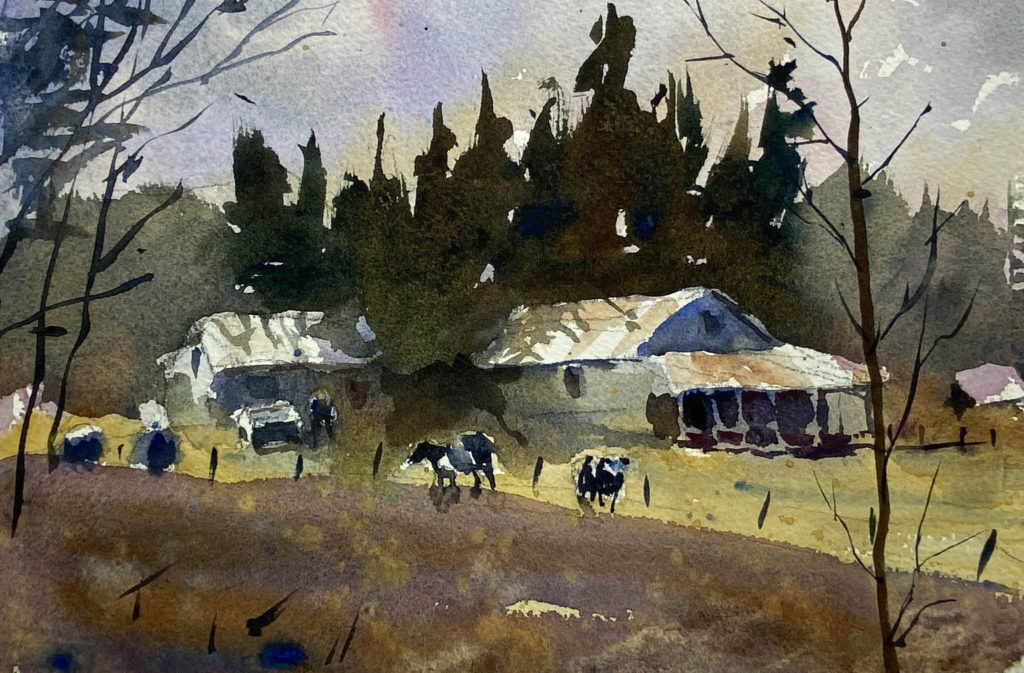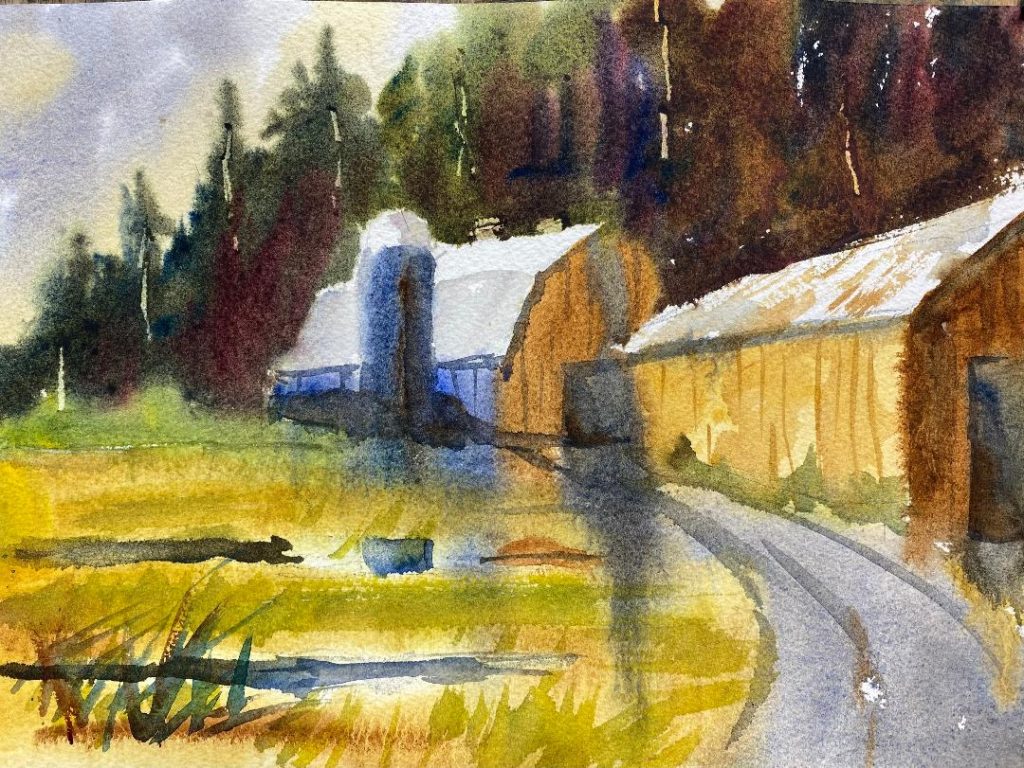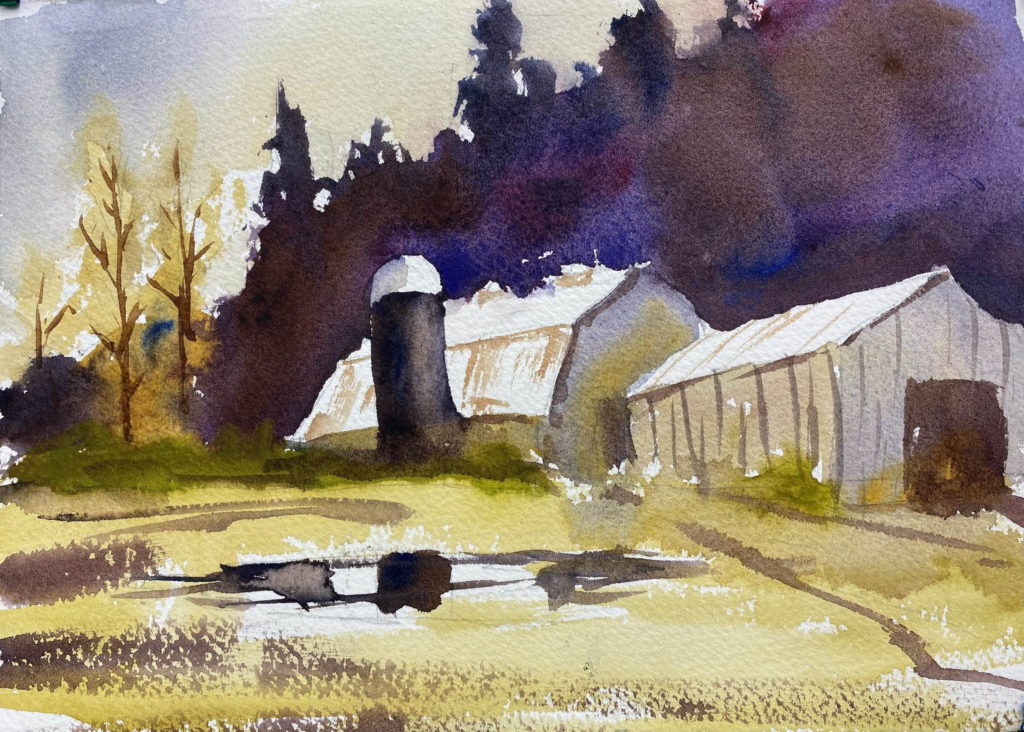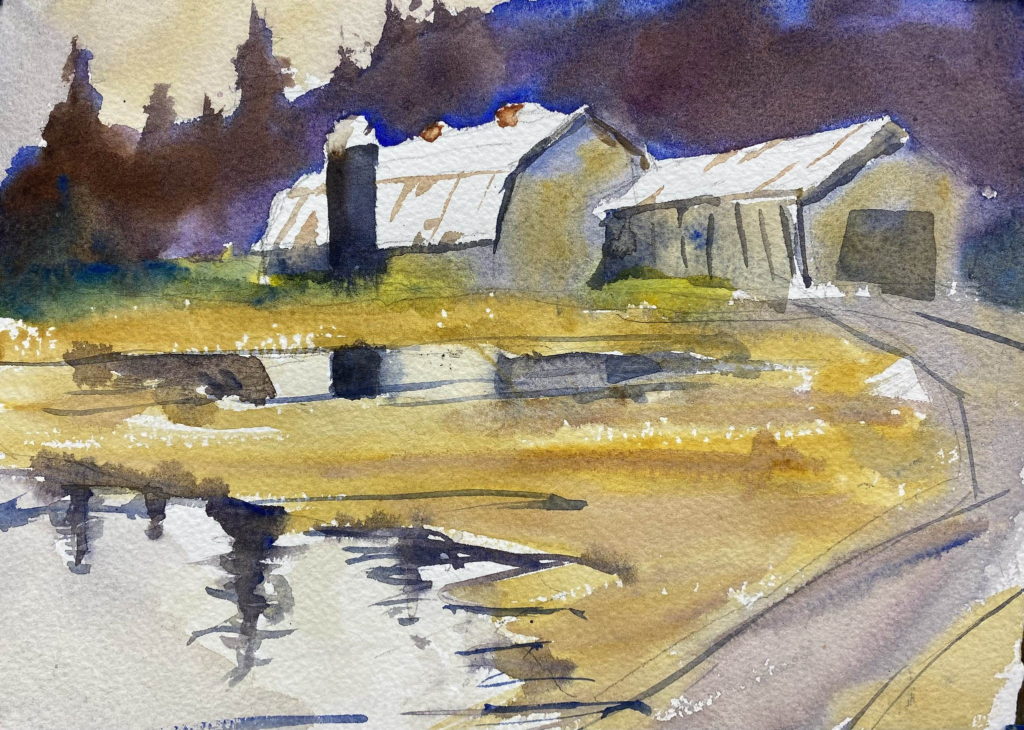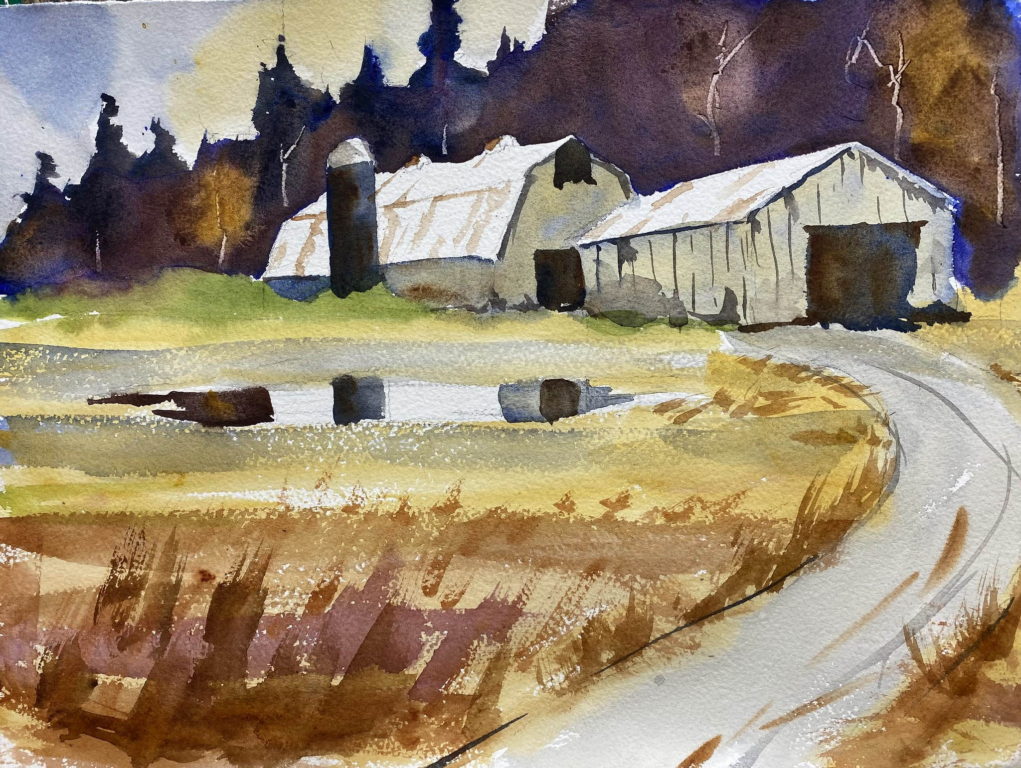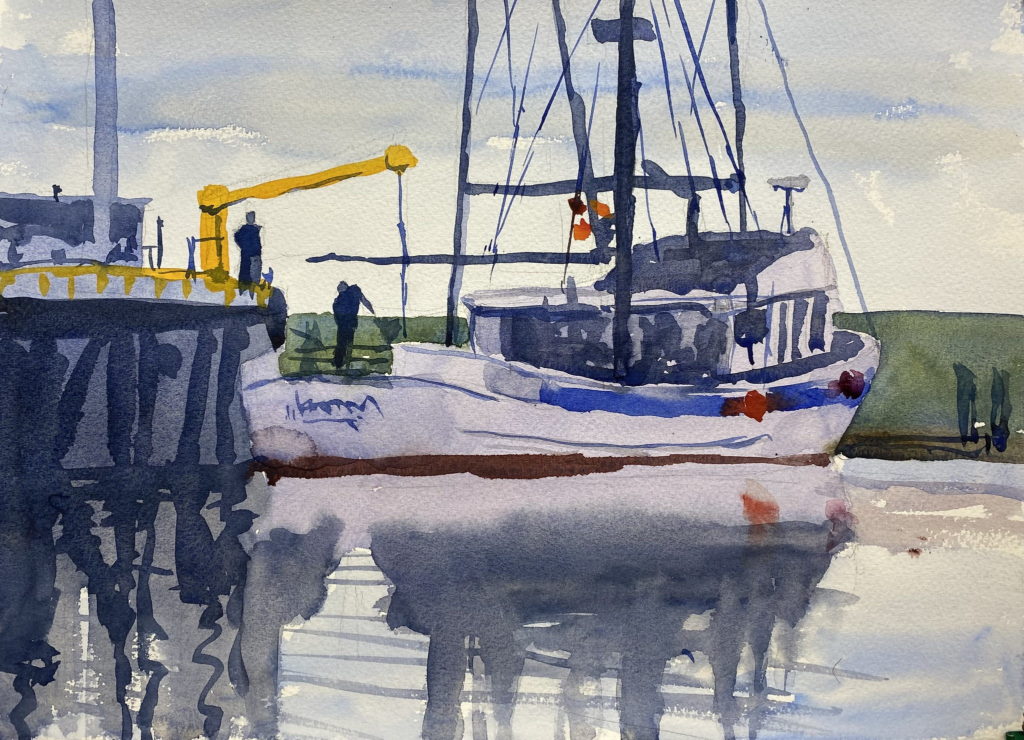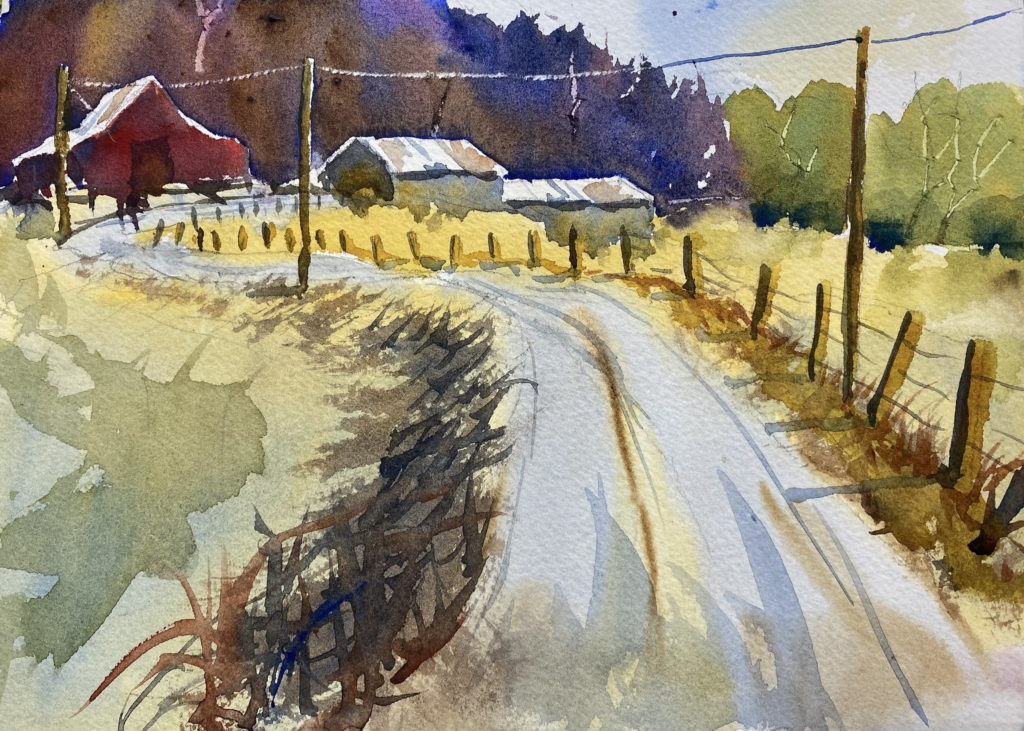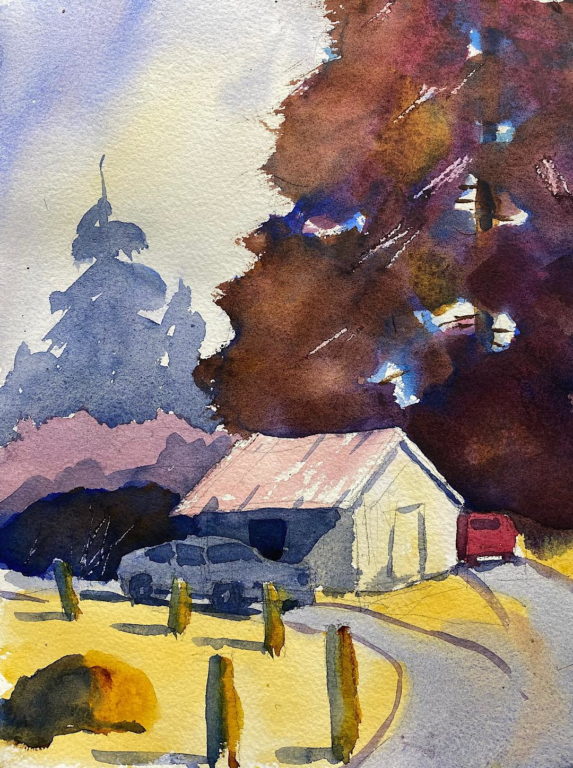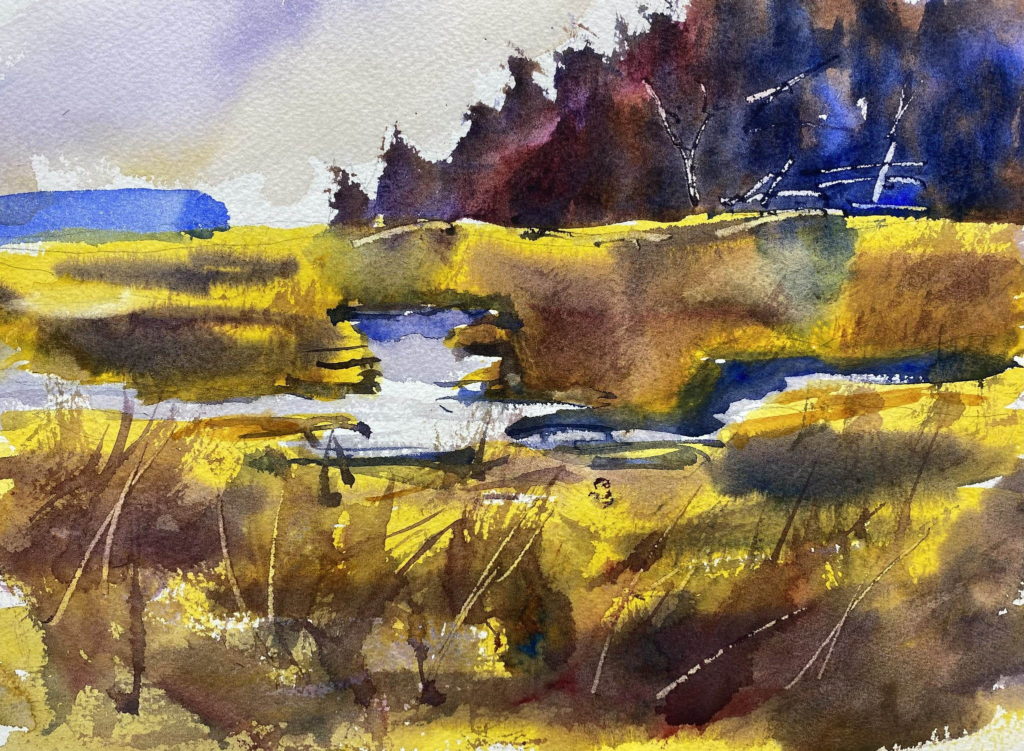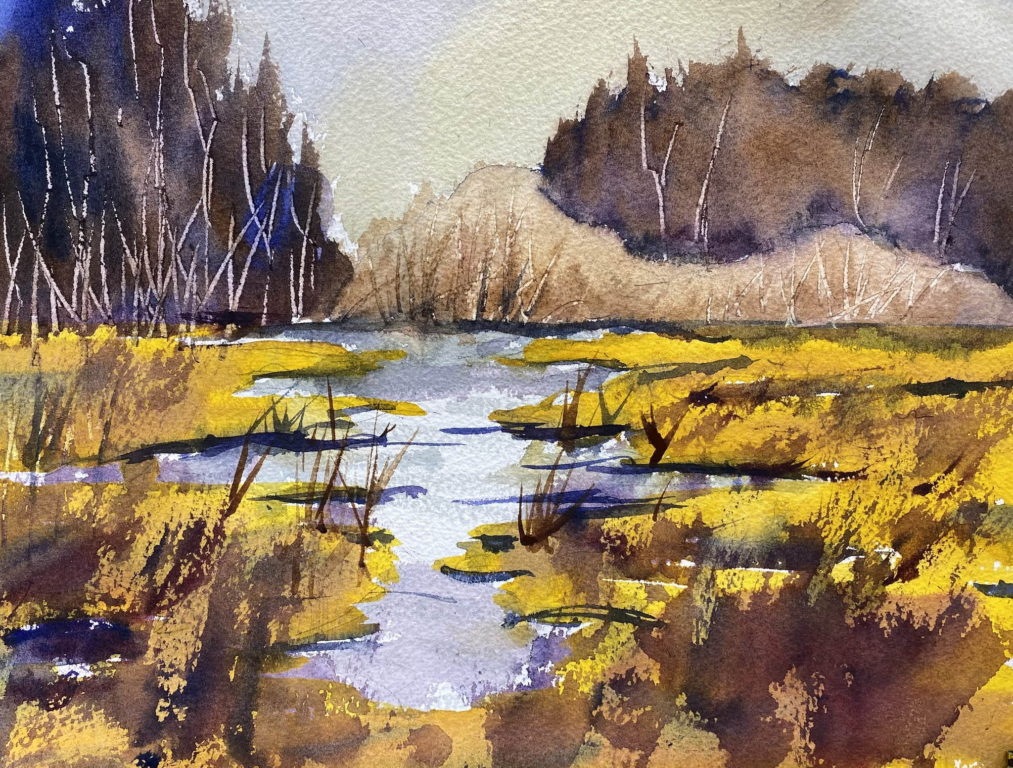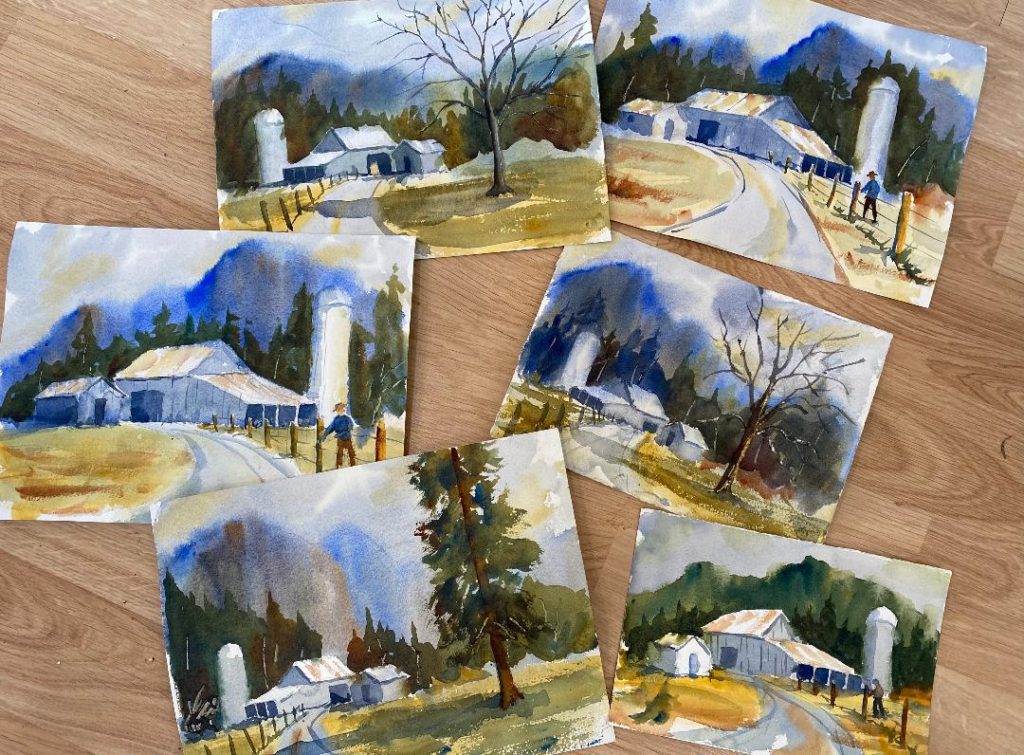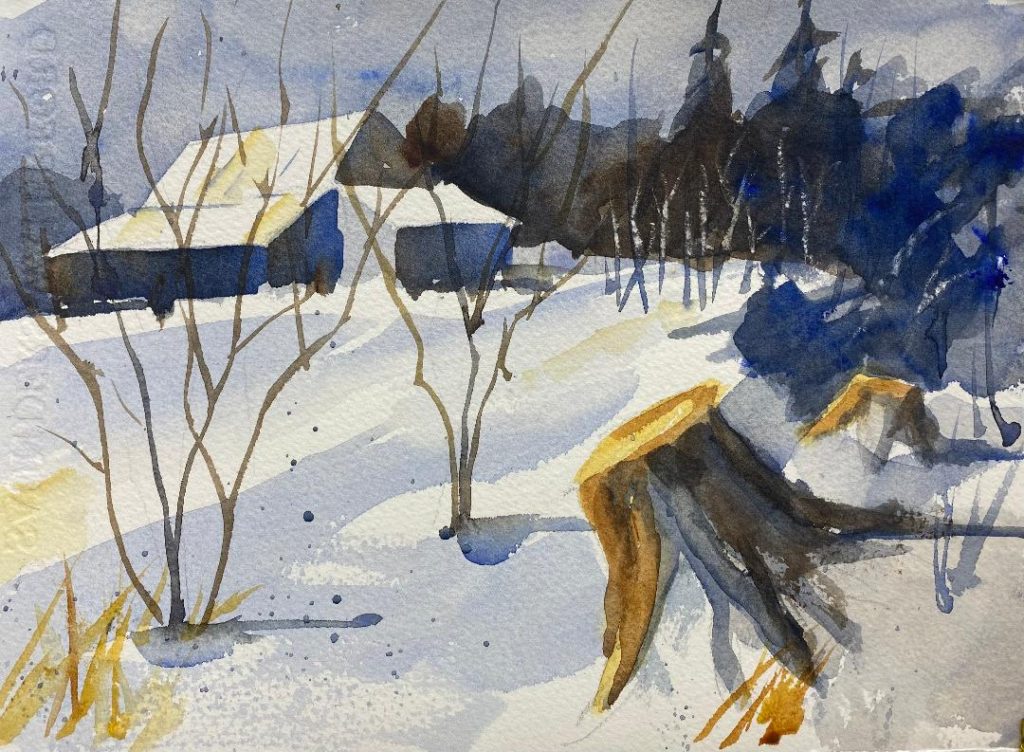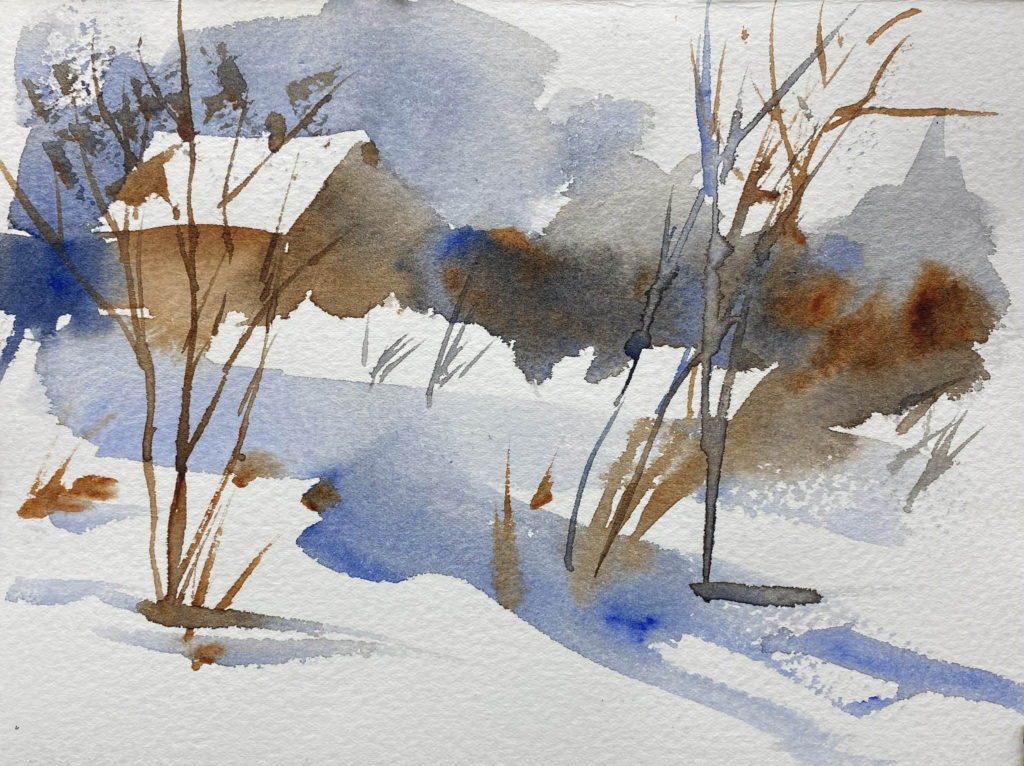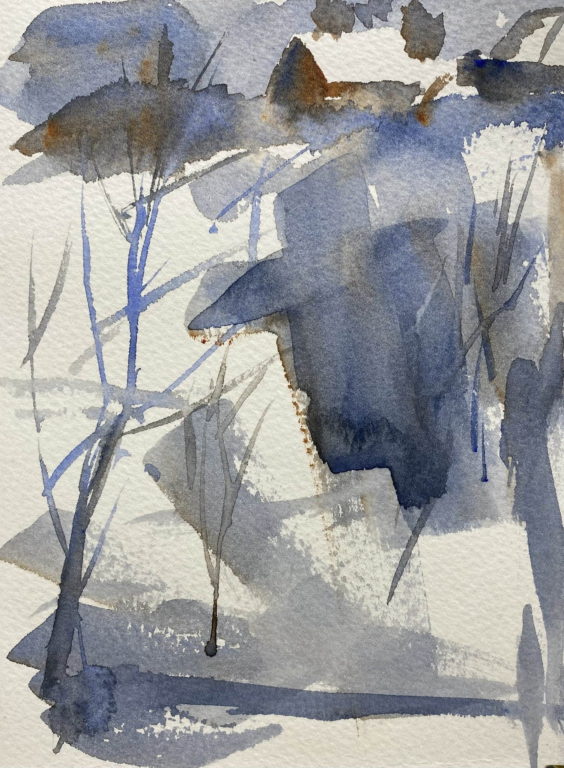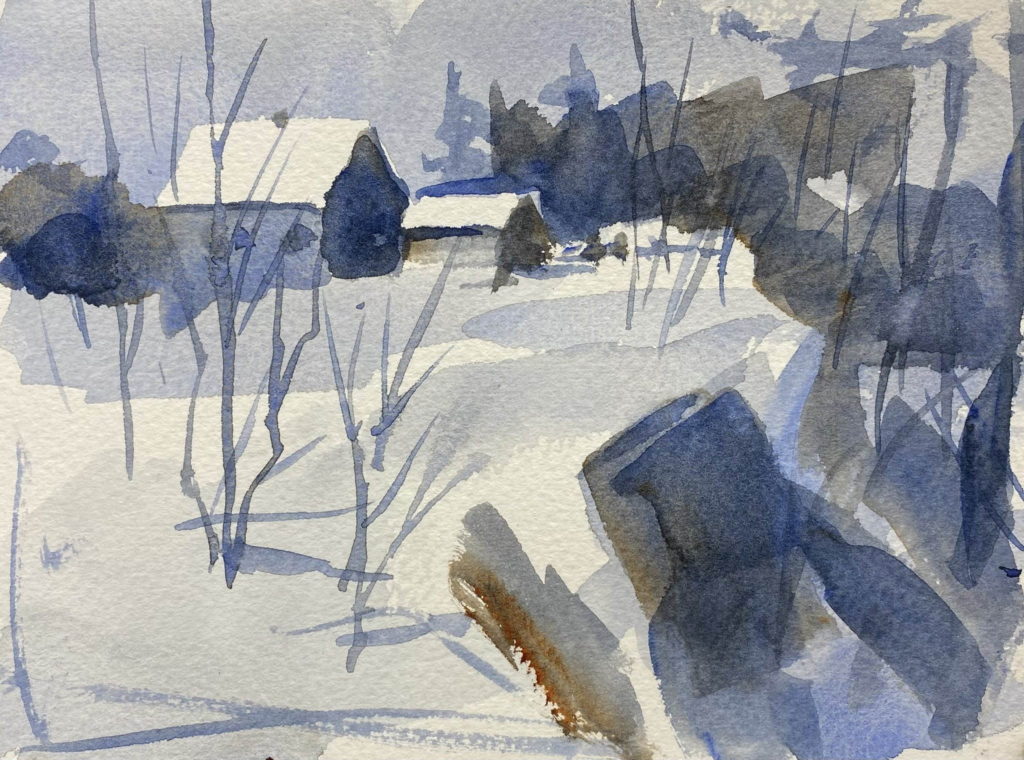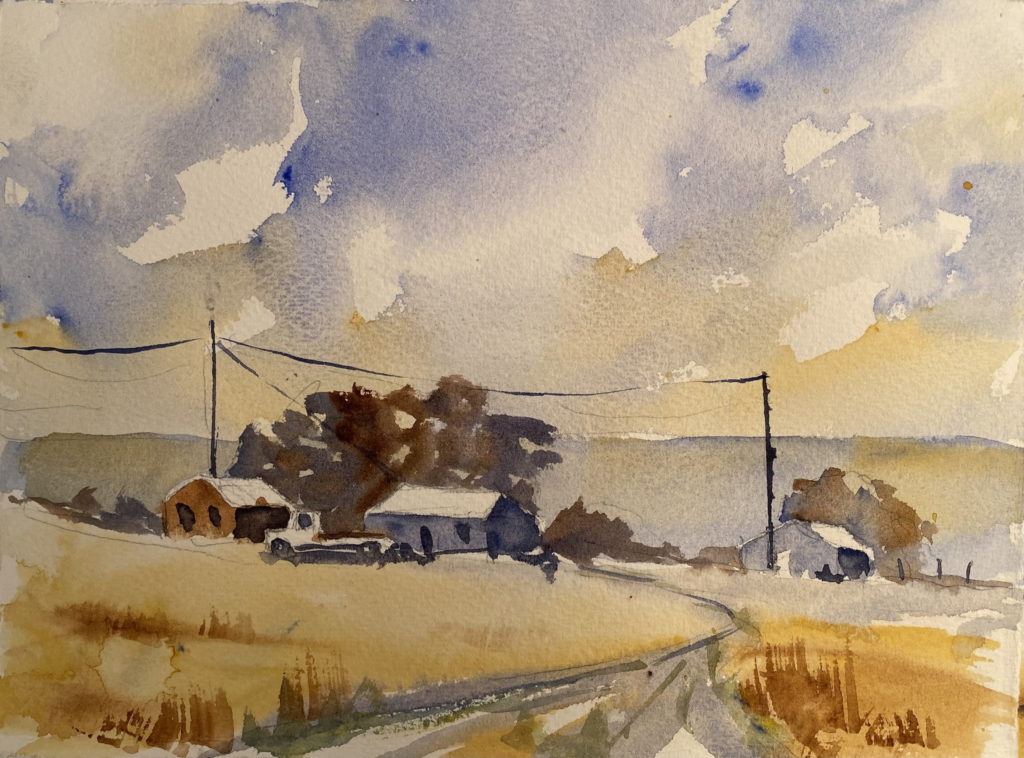Dramatic skies
After watching some videos about painting skies in watercolor, I decided to try to create some sweeping, dramatic skies like those of the English watercolorists. Paintings by Edward Wesson, Trevor Chamberlain, and Edward Seago show moist, colorful English skies, and they’re my models. The sky above us seems blue but it usually has more colors in it, and pale washes of blue, red, and yellow help bring the sky alive.
For my first scene, I painted a wet, cloudy sky and let it blend into the field below, painting around the barn. Then I added trees, the barn colors, and the foreground.

I liked the way that turned out, so I decided to do it again. This time I added a slash of sunlight coming across the field, which adds a lot of interest to the scene. I also put a few cow-like figures in the field.
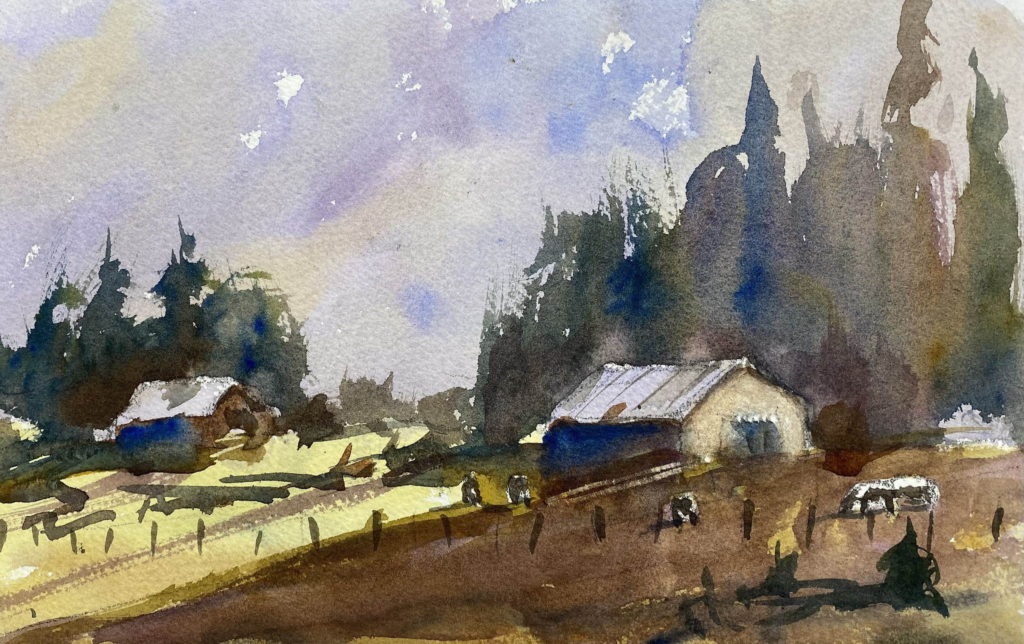
I liked that even better, so I copied a Joseph Zbukvic watercolor for my next attempt. This is an Australian farm, and you can imagine the summer heat. I’m pleased with the way the washes ran together in places, bringing the painting together. This is the way I’d like to paint — loose and suggestive.
